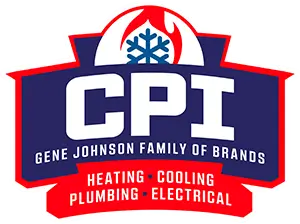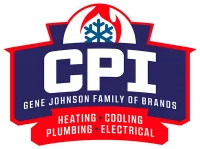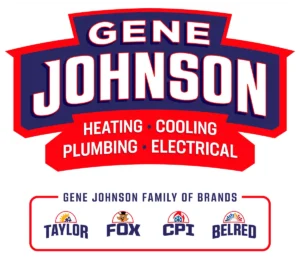How to Measure Carbon Footprint of My AC
Conscious activism weighs heavy on everyone’s mind these days. There are days we wonder how much we impact our surrounding environment or if we do at all.
If we aren’t partaking in any movements, the least we can do is avoid causing undue harm. However, how can we do that without knowing if we are causing any in the first place?
An excellent gauge of how you impact the environment is through your carbon footprint. While all appliances contribute to your home’s footprint, some do so more than others. HVAC systems deliver significant contributions to your home’s collective emissions.
Routine maintenance is ideal for preserving your air conditioner and the environment, regardless of your carbon footprint. Still, keeping tabs on your environmental impact may help you sleep better at night.
HVAC units are practical fixtures, but ill-maintained air conditioners are detrimental.
What Is the Carbon Footprint of My Air Conditioner?
There are various ways you can determine an appliance’s carbon footprint. However, units of measurement are categorized for more accurate readings.
Carbon footprint isclassified into three categories. HVAC systems fall into two different scopes, with air conditioners falling under the second.
You will find different kinds of carbon footprints below:
- SCOPE 1: Direct
- SCOPE 2: Indirect
- SCOPE 3: Supplementary
SCOPE 1: DIRECT
The first scope accounts for all appliances that directly produce carbon emissions. HVAC systems with combustion elements, like furnace systems, are classified as direct sources of carbon emissions, which include Carbon Monoxide(CO), Carbon Dioxide(CO2), and Volatile Organic Compounds (VOCs).
Cooking, heating, and anything with burning components emits carbon particles. Fixtures such as fireplaces, candles, furnaces, and stoves are all visible contributors. Appliances and fixtures may emit smoke, visibly releasing carbon into the environment.
However, some systems produce colorless and odorless emissions that are also considered harmful to the environment.
Volatile Organic Compounds also produce Greenhouse Gases, which compound your home’s carbon footprint. VOCs are made up of various carbon compounds, including Benzene, Ethanol, Glycol, Xylene, and Methylene.
While your air conditioner typically falls under the second scope, it does use chemical compounds that may directly emit VOCs. A volatile organic compound called refrigerant is the most important component in your air conditioner.
The refrigerant operates in a closed-loop system that circulates through copper coils. During the refrigerant cycle, chemicals condense and evaporate, releasing minute particles into the air.
Compromised coils or damaged storage may increase refrigerant emissions. However, regular AC emissions are otherwise negligible.
SCOPE 2: INDIRECT
Your refrigerator, water heater, television, and other gadgets consume energy to function. However, they consume less energy than whole-home heating and cooling systems.
According to the United States Environmental Protection Agency(EPA), HVAC systems account for forty-six percent (46%) of residential energy consumption on average. HVAC systems may heavily influence the size of your home’s carbon footprint.
Besides refrigerant, air conditioners run on natural resources and electricity. All appliances that consume electricity are categorized into the second scope. For Scope 2, homeowners may safely gauge their carbon footprint based on monthly energy costs.
You might notice fluctuations in monthly costs depending on HVAC usage. The more electricity you consume, the larger the carbon footprint. Fewer energy costs may translate to a lesser carbon footprint.
However, you may enlist professional services to measure your air conditioner’s operations accurately. Experts can measure fuel intake and electrical consumption to help stabilize air conditioner functions to reduce costs and emissions.
SCOPE 3: SUPPLEMENTARY
The third scope is everything we incur outside of our residence. Taking public transport, riding boats, and flying on a plane are things we do that increase our overall carbon footprint.
On-going and everyday practices must fall under the first two scopes. Scope 3 accounts for everything we do or use intermittently that consumes energy and produces emissions.
However, they aren’t things we habitually use or do. While the third scope is harder to measure, the first two scopes are more tangible and have corresponding measurement methods.
How Can I Measure My Air Conditioner’s Carbon Footprint?
Homeowners may estimate their air conditioner’s carbon footprint based on their monthly costs. Still, energy costs may be erratic and don’t always result in accurate readings.
Your home’s monthly energy costs don’t exclusively measure your air conditioner’s energyconsumption. You may notice lesser costs due to other inactive appliances.
Lesser energy costs may feign AC efficiency, leading homeowners to the wrong conclusions. Thankfully, there are better ways to measure your AC’s carbon footprint than relying on inaccurate estimates.
You may enlist professional assistance to conduct emission testing. Emission tests are an effective method to determine your air conditioner’s environmental risks and cooling performance.
Emission Testing
HVAC experts may conduct CO2 emission testing on air conditioners to measure their carbon footprint. Emission testing can also determine the condition of your AC units.
Most air conditioners have set configurations that define operation efficiency. Experts may conduct emission testing and determine whether your air conditioner operates in its optimal range.
You may hire third-party inspectors for emission testing or HVAC contractors who provide holistic maintenance services. Hiring reliable experts helps measure and remedy air conditioner efficiency.
Reputable HVAC companies are equipped with various tools and techniques to provide comprehensive services. It may include emission testing and other environment-related tests and their corresponding remediation.
Reliable air conditioning experts may also issue critical component replacements to help optimize efficiency. Experts may turn your old inefficient AC installation into a more efficient mechanism using inversiontechniques to provide your home with more effective cooling.
Hydrofluorocarbon
Some air conditioners and refrigerators produce up to fifty-four percent (54%) of potent Greenhouse Gases(GHG). Hydrofluorocarbonemissions result in major GHGs, which greatly impact your home’s carbon footprint.
An effective inversion technique only the most knowledgeable technicians may conduct is the Hydrofluorocarbon Inversion Method (HCFC-22). The HCFC-22 is a technique used to measure chemical emissions and pinpoint their sources.
By locating the HCFC source, experts can effectively reduce their emissions. They may also deploy restoration techniques to alter your air conditioner’s resource intake and chemical usage.
Know Your Carbon Footprint
Knowing your air conditioner’s efficiency provide users an insight into their possible carbon footprint. The more efficient your air conditioner is, the lesser your carbon footprint may be.
Ensure you opt for more efficient air conditioners with more innovative systems for optimal cooling efficiency. Find an air conditioner’s Seasonal Energy Efficiency Ratio (SEER) ratings to determine system efficiency.
Air conditioning systems with higher SEER ratings are generally more energy efficient. High SEER air conditioners are more economical and eco-friendly. They can provide users with better overall sustainability.
While higher SEER ratings won’t help you measure your carbon footprint, you can count on them to reduce environmental impacts. Users may reducetheir carbon footprint by opting for more innovative air conditioners with superior SEER ratings.
AC systems with 16 SEER have more efficient functions that may even reflect on your monthly energy costs. While high-efficiency systems are typically more expensive, they can provide users with multifaceted benefits.
Always opt for efficient AC models and observe routine maintenance to uphold unit efficiency, which helps reduce environmental impacts and monthly costs.
How to Reduce Your Air Conditioner’s Carbon Footprint
Eco-friendly cooling is achievable but will still depend on various factors related to your air conditioner. Even older and less efficient installations may produce viable efficiency thanks to industry tools and techniques.
However, it will all depend on your air conditioner’s initial efficiency. HVAC experts may boost cooling functions to restore initial efficiency, which enhances overall sustainability.
Still, your AC system’s cooling capacity can only be enhanced; it cannot be altered. An air conditioner with inferior SEER ratings will always consume more energy and produce more emissions.
While measuring your air conditioner’s carbon footprint is helpful, it is only a supplemental step. You don’t need to know your current carbon footprint to take the necessary steps to reduce them.
REDUCE YOUR COOLING SYSTEM’S ENVIRONMENTAL IMPACTS:
More and more homes across America are partaking in the conscious cooling movement. You can play your part in preserving the environment by enhancing your air conditioner’s functions.
Below, you will find helpful tips to preserve your home’s cooling system and the surrounding environment.
- Opt for air conditioners with 16 SEER or higher.
- Observe routine maintenance.
- Conduct comprehensive maintenance tasks.
- Do not delay AC repair or replacements.
- Enlist reliable HVAC experts.
Reputable HVAC Contractors in Mount Vernon, Washington
Are you looking for reliable cooling services in Mount Vernon? CPI Plumbing & Heating is a reputable company operating in Washington that provides residents with accessible, affordable, and reliable HVAC services.
Contact CPI experts for effective AC Repair & Replacement services today. We can help remedy your minor and significant AC issues that result in more sustainable cooling.
We will stabilize AC functions to ensure more reliable airflow, using less energy and leading to fewer carbon emissions. Let CPI help you find the most suitable and efficient air conditioner for your home.
The CPI team can also help you optimize your current AC installation. Our experts undergo extensive training to ensure your air conditioners only receive the most accurate and effective repairs and replacements.
Call CPI Plumbing & Heating Now at (360) 822-9306 to Reduce Your Air Conditioner’s Carbon Footprint and Prep Your Cooling Systems for Summer!


